Museum of American armored vehicles. Long Island
When I was a young schoolboy, I did not like museums. Cultural treks throughout the school historical I remember the museum only by slowly moving around the halls in waxed mastic parquet under the mournful voice of a full-time guide: “Before you is one of the oldest stone images of a man dated from the 2nd millennium BC ...” What I had before those anthropomorphic sculptures of a terrible appearance when I was supposed to, and what should be there, I was simply obliged at this moment to spit through the tube with a chewed newspaper into the Bear or Kolka! There was no way to break out of the mourning moving sequence - museum grannies-watchmen vigilantly vigilant at their posts and any step to the right - a step to the left was stopped in place. While we were brought to the interesting (models of ancient sailing ships, knightly armor, cold and gunshot weapons, military equipment, that is, everything that the boys of that age like to look at), I was already exhausted, my head was spinning, I wanted to eat and go home ...
I realized the beauty of individual visits to museums in the middle of the 60, when grandfather retired. (Frontovik. Military builder. Major. Dismissed from the army to reduce in 1955-m, 9 months before the expiry of the period of service allows you to receive a military pension. Everything started from the beginning - a foreman at the factory building site. Released, as they said, for a well-deserved rest in 1964-m, earning a penny penny.)
Since then I have visited many museums of various kinds in many countries and cities. These were tiny local history museums in provincial cities, lovingly preserved by enthusiasts, and famous museums in a number of capitals of the world, contained in impressive state allocations and subsidies from international funds. Some were better remembered, others worse. It is simply impossible to remember them all. Over time, only a general impression remains, thanks to their creators and custodians, as well as a pleasant feeling of familiarization with the particles of a preserved story.
I like American museums related to weapons. They are usually rich, beautifully decorated. Most of the exhibits, except for those under the glass, can be touched. Even those who are fenced with sores, will always give you a close look, just turn to the caretakers. In these museums do not meet the grannies, then hosted the old-hearty. Perhaps my peers. In special sections, where weapons samples are laid out, they will tell you everything and show you. Find out how to equip a machine-gun belt, fill shops with ammunition, look and try to do an incomplete disassembly or neutralize an anti-personnel mine, etc. Here’s what a similar section in the Boston Museum looks like:
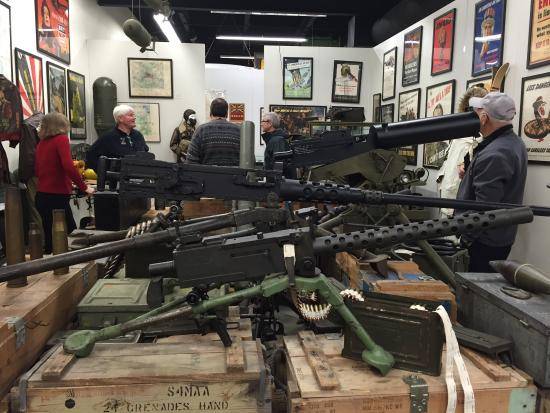
The conditions are as follows: do not play pranks, do not direct weapons at people, do not scatter educational exhibits You can open any boxes there, but after using something, fold it into place.
So once again, once by the will of fate in foreign lands, I found time to visit a number of museums. About one of them I have in several articles told the readers "IN".
Next up was the Museum of American Armor. Translated, it will be, perhaps, the “Museum of American Armored Vehicles”. It is located on Long Island in Old Bethpage, miles in 30 from Manhattan. It is still a new museum, created in 2014, on the seventieth anniversary of Operation Neptune, a naval landing operation conducted by 6 on June 1944, in Normandy during World War II by the forces of the United States, Britain, Canada and their allies against Germany. Its founder was a veteran of the Second World War, and later a successful businessman Lawrence Kadish, who donated for the construction of a building and a selection of the 4 collection of a million dollars. Unfortunately, he is no longer with us ...
On closer examination, it turned out that this is not only a museum, but it is also a well-stocked and well-equipped base of reenactors. Just two days before my arrival, a spring rollout took place here dedicated to the events of World War II. Naturally, there was some confusion in the museum I visited.
Now all the equipment is cleaned, washed, inspected by mechanics and placed in places.
In total, the museum exhibits more than 30 units of large military equipment, mainly since 2MB.
All of them are in excellent condition and take part in the creative productions of local reenactors.
Universal Carrier. Universal conveyor
The three-ton offspring of the British military industrial complex (produced in the USA), which was successfully used during 2MB as an armored personnel carrier of infantry units, carrier of weapons, carrier of ammunition, artillery tractor, reconnaissance vehicle and others. A significant number of cars were also delivered to the European allies of Great Britain during the war, including on Lend-Lease for the Red Army. After the war, Universal Carrier remained in service with the UK until the 1950-s and was used in the Korean War, and also supplied to a number of other countries, in some of which it was removed from service only in the 1960-s. Total released over 100 000 pcs. It is said that one such copy is available in the Kubinka Armored Museum.
M8 Greyhound - light US armored car during the Second World War. Developed by Ford Motor Company in 1942 on the basis of the T17 armored car. It was produced serially from March 1943 to April 1944 of the year, the total release was 8523 units. The main armament is 37-mm semi-automatic gun M6. It was actively used by US troops in World War II (during the landing in Italy, Normandy and during the attack in the Ardennes for reconnaissance and patrolling), as well as the Korean War, and was removed from service at the beginning of the 1950s. In large quantities supplied to other countries and used in a number of armed conflicts. Years ago, 8 was still in service in a number of countries.
M20 - command and control vehicle based on M8. Armament - heavy machine gun Browning M2. 3791 unit released.
M3 Scout Car
Light multipurpose armored personnel carrier of the United States during the Second World War. M3 was actively used in World War II as a reconnaissance and patrol vehicle, a light armored personnel carrier, a command and control vehicle, an artillery tractor or a carrier of weapons, usually a mortar.
It was created in 1937 year as a further development of M2. Serial production was conducted from 1937 to 1944. In total, 20 994 machines of this type were produced. Actively used by the US Army, more than 11 thousand under the Lend-Lease program was transferred to the allies: for the army of Great Britain, Canada, the USSR, as well as Belgian, Polish and French military units operating on the western front and in North Africa. A number of captured cars went to the Wehrmacht. The armored car was retired from most of the countries that used it shortly after the end of the Second World War, but in some countries M3 remained until the 1990s. They say that such a copy is in the museum of military equipment in the city of Verkhnyaya Pyshma of the Sverdlovsk region.
Daimler ferret - British light reconnaissance armored 1950-s. It was the result of a revision of the development times 2MB. Welded steel hull, crew of two. Turret, armed with machine gun 30 caliber (7,62 mm). Equipped with a Rolls-Royce B60 Mk 6A six-cylinder engine with a power of HP 129. Ferret Mk.2 in and there is the Armored Museum in Kubinka.
Tank "Stuart" M5 - American light tank during the Second World War. Named after the General of the American Civil War, Jeb Stewart. This is his late model - M5. Main armament tank was the 37 mm M6 gun, the former tank version of the M3 anti-tank gun. In total, 2074 tanks of this modification were produced, including 1470 at the Cadillac plants in Detroit and Michigan, 354 at the General Motors plants in South Gate and 250 at the Massey Harris plants. Literally these days about its modification, M3A I told On “IN” dear Roman Skomorokhov.
Tank M4 "Sherman" - The main American medium tank during the Second World War. It was widely used in the American army at all places of hostilities, and also in large quantities delivered to the allies (primarily Great Britain and the USSR) under the Lend-Lease program. After the Second World War, "Sherman" was in service with the armies of many countries of the world, and also participated in many post-war conflicts. In the US Army, M4 was in service until the end of the Korean War. The name “Sherman” (in honor of the American general of the times of the Civil War, William Sherman) received the tank M4 in the English army, after which this name was assigned to the tank in the American and other armies. The Soviet tankers had the nickname "emcha" (from М4).
M18 Hellcat - 76-mm self-propelled gun, tank destroyer. Unlike most of the ACS of that time, created on a special chassis, and not on the basis of the tank. During mass production from July 1943 to October 1944, General Motors Buick Division produced 2 507 units M18. In World War II, M18 was actively used by US forces in 1944 — 1945 in battles in Italy and North-Western Europe. After the end of the war, this ACS was soon decommissioned in the US, but was subsequently sold to other countries, in some of them, still in service. Under the Lend-Lease in the USSR got 5 such SAU. One copy can be seen in Kubinka.
M4 Tractor - artillery tractor tractor, which was used in the US Army with 1943 year.
It was conceived as a tractor for towing large-caliber artillery shells and other heavy weapons. The M4 was built on the chassis of an obsolete lightweight tank, the M2. One variant was designed for towing anti-aircraft guns, and the other for howitzers. The rear compartment was designed for the crew, guns and other equipment. Later versions also had a crane for feeding heavy projectiles. M4 was manufactured at the Allis-Chalmers plant in Milwaukee, starting in 1942, and operated in the US Army until about 1960.
The M155 / M1 2 mm gun (later M59), commonly known as the Long Tom, is a field gun used by the US military during World War II and the Korean War. For the first time, the “Long Tom” was used in the 24 battle of December 1942 during the North African campaign as part of the battery “A” of the 36 division of the field artillery. In the future, the guns were equipped with about 49 divisions, including 40, who fought in the European theater of operations and 7 - in the Pacific. Calculation - 14 people. Firing range - 23 km. In Upper Pyshma of the Sverdlovsk region one can see the M2 of the 1944 model of the year.
Bofors - automatic anti-aircraft gun caliber 40 mm, developed in 1929 — 1932 years by the Swedish company AB Bofors. The most common and used means of air defense of the Second World War, actively used by both warring parties, both in land and ship versions with numerous modifications (casemate, towed, self-propelled armored and unarmored, rail, de-installation and so on.). As of 1939 year (at the time of the outbreak of hostilities in Europe), Swedish manufacturers exported Bofors to 18 countries of the world and entered into licensing agreements with more 10 countries. Under the Lend-Lease from the USA to the USSR, 5500 of such guns was supplied. You can see in the museum of national military history in the village Padikovo Istra district of Moscow region.
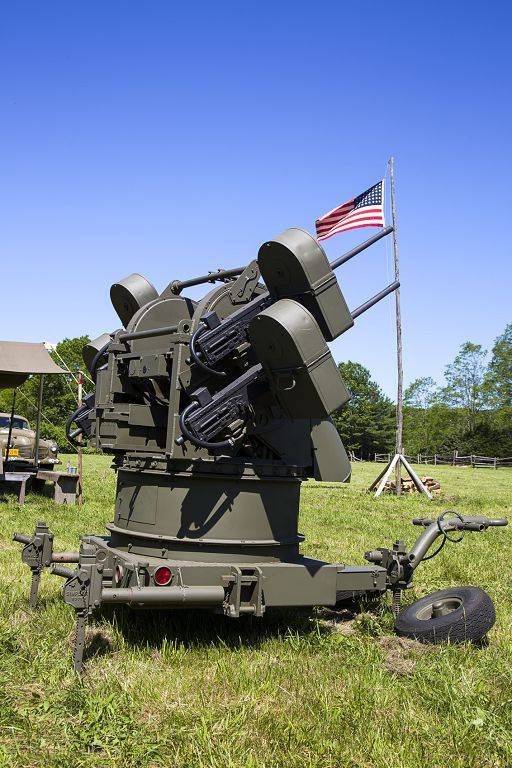
Quad .50
Taking the best American automatic weapons of the Second World War, 0,50 Browning M2 machine gun, the designers created a mobile battery with four machine guns, which gave a huge fire power to the US Army. Produced for installation on a trailer, truck, etc.
A short film on 4 minutes, well showing the device and application of this device:
Amtrak - tracked amphibious assault vehicle of the amphibious tracked armored and non-armored transporters and fire support vehicles, created in the USA in the second half of the 1930-s and during the Second World War. Multipurpose transporter.
Machines of the LVT family from 1942 were widely used both by the Marine Corps and by the US Army in the battles of World War II, primarily in the Pacific theater of operations. In addition, although on a much smaller scale, LVT was used during the Italian campaign, as well as in Western Europe, but not during the landing in Normandy, but only in overcoming inland water barriers. LVTs were also used in the Korean War, but by the mid-1950-x were removed from service with the United States and replaced with amphibious armored vehicles of the new generation. The LVT family of vehicles was also exported in significant quantities to the allied US countries, in some of which they continued to be used until the 1970s.
M22 Locust - light airmobile tank of the US Army during the Second World War. Designed in 1941 — 1942 and produced in 1943 — 1944. The main armament of the M22 was the 37-mm M6 gun, a tank version of the M3 anti-tank gun. Despite the relatively large number of cars produced, the tank was never used by US troops in combat. The 260 tanks M22 were transferred under the program of Lend-Lease to the troops of Great Britain, who limitedly used them in battles. Pretty rare specimen.
37 mm Gun M3 - American light anti-tank gun during the Second World War. This weapon was mass-produced from the 1940 of the year and became the standard anti-tank weapon of US infantry units. However, strengthening the armor of German tanks quickly made the Allied 37-mm anti-tank guns (VET) obsolete (including the M3). As a result, in 1943 — 1944. The M37 3-mm cannon gradually began to be replaced in parts with the more powerful M57-1-mm cannon. On the other hand, in the Pacific theater of war (theater of operations), where US armies and marines were confronted by outdated Japanese tanks with anti-bullet armor, the M37 3-mm cannon was successfully used until the very end of the war. Like many other light technical and technical equipment, M3 was used not only against tanks, but also against enemy manpower - for this purpose, its ammunition load had high-explosive fragmentation projectiles and canister. On the basis of the M3 stem group, two versions of the tank 37-mm gun were developed.
Self-propelled mine "Goliath" - German ground tracked self-propelled mine. It had approximate dimensions: 150 × 85 × 56 cm. The design carried 75 — 100 kg of explosives and was intended for the destruction of tanks, dense infantry formations and the destruction of buildings. Managed by wired cable. There were a number of units controlled by radio. "Goliath" was disposable, as it was intended for self-destruction. At first, the “Goliaths” used an electric motor, later models (known as SdKfz. 303) used a simpler and more reliable gasoline engine with a power of 12 l. with. Although a total of 7564 units were produced, for obvious reasons, it is a rather rare exhibit.
A short video about this device:
In the museum you can see the Israeli M48 "Magah", he also selected from Jordan in 1973, Patton III and 6-ton tank M1917, also known as "Ford-two-seater" (eng. Ford Two-man) - light tank United States during the First World War, a variant of the Renault FT.
The museum also carries out a great deal of work on the patriotic education of the younger generation. Special thematic lessons for schoolchildren are held on the basis of the museum. They are led by professional military, military historians, instructor specialists and well-trained volunteers from among the local reenactors.
Here's how it looks:
Rollovers involving reenactors are also of interest and attention. These days hundreds of spectators come to the museum. It is really beautiful. It should be understood that all this is a group of lovers and everything is carried out, as they used to say, on a voluntary basis.
The annual fee of the 100 dollars order allows anyone to join the group and participate in a dynamic action. The episode of hostilities takes place somewhere in France in 1944. It looks like this:
Below are photos from the May rollout.
Well, who if not grandfather!
Then only dad!
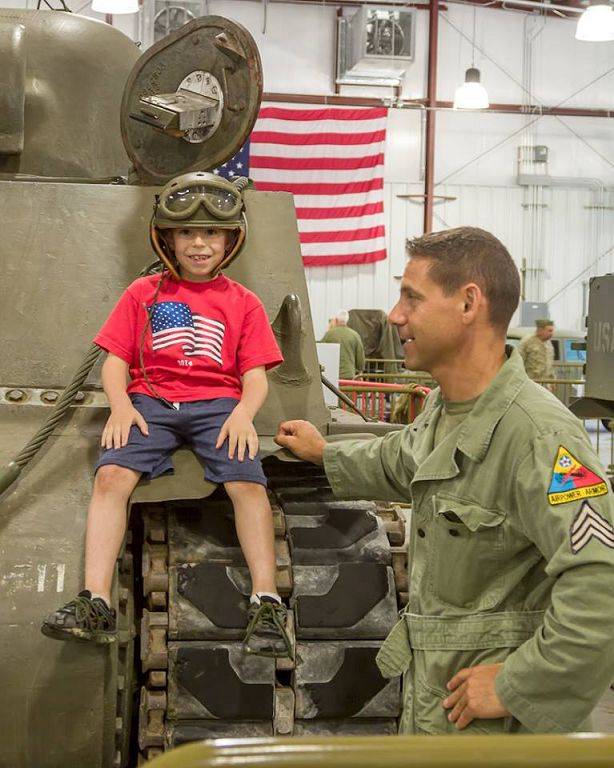
Reconstructors: the backbone.
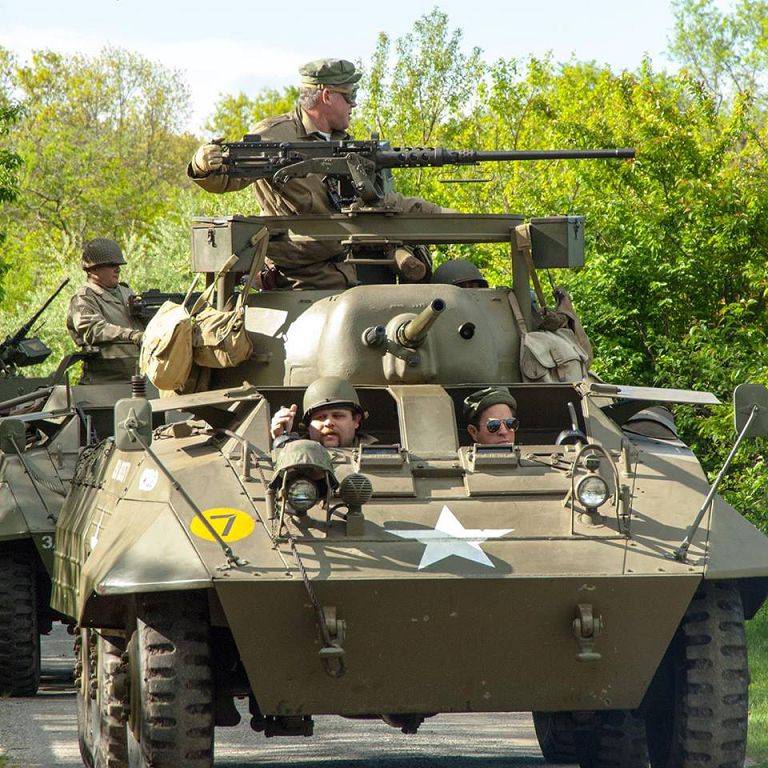
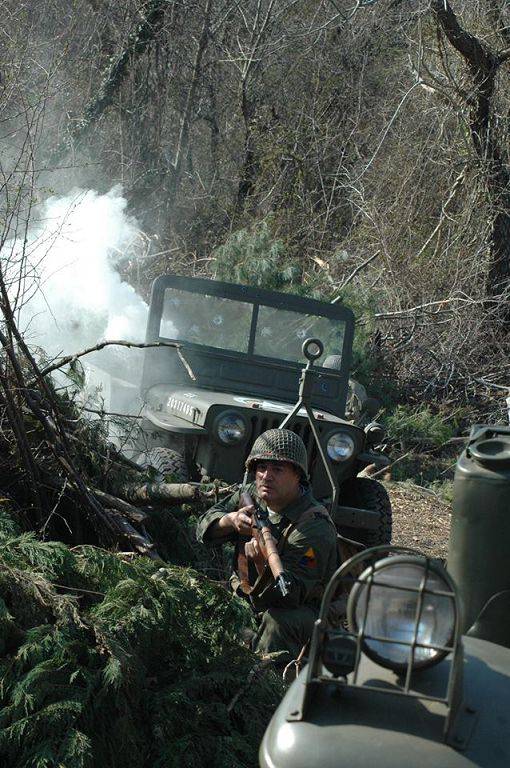
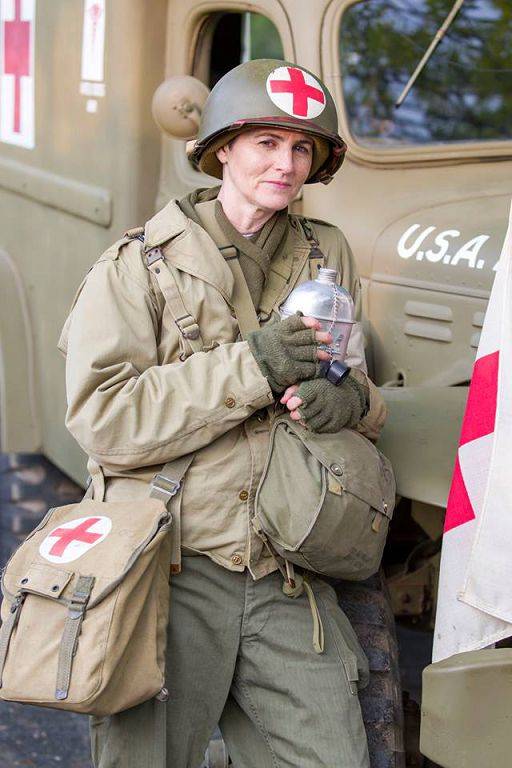

Demonstration of technology. Autumn 2017 of the year:
A short report about the museum from WG Explores (there are titles there, they can be translated into Russian):
Sources: Museum site and Wikipedia.
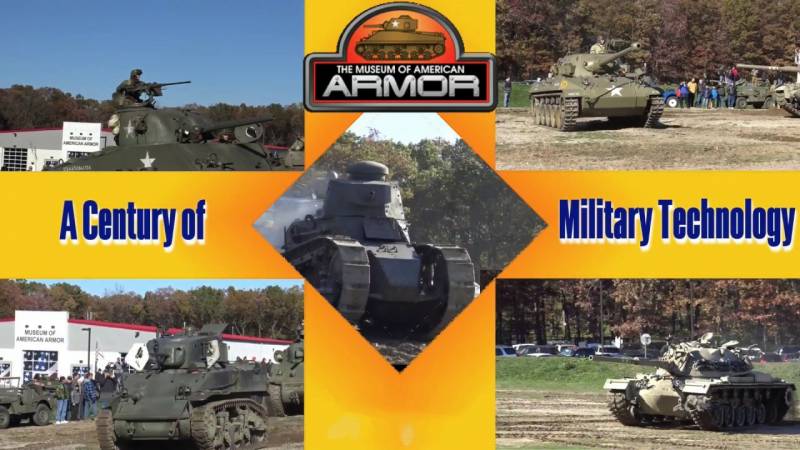
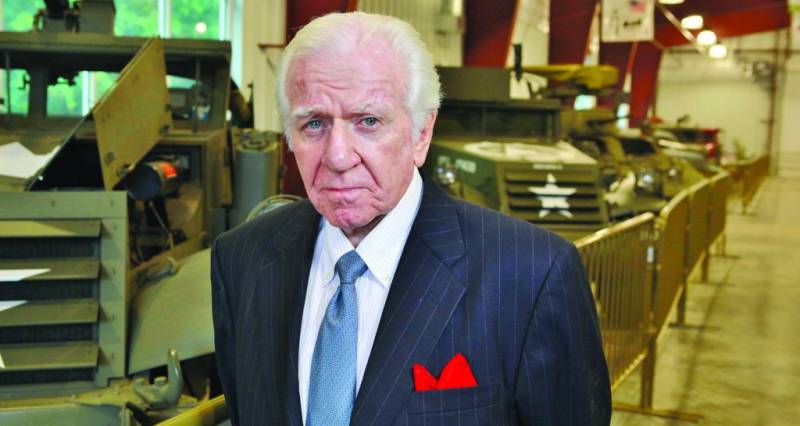
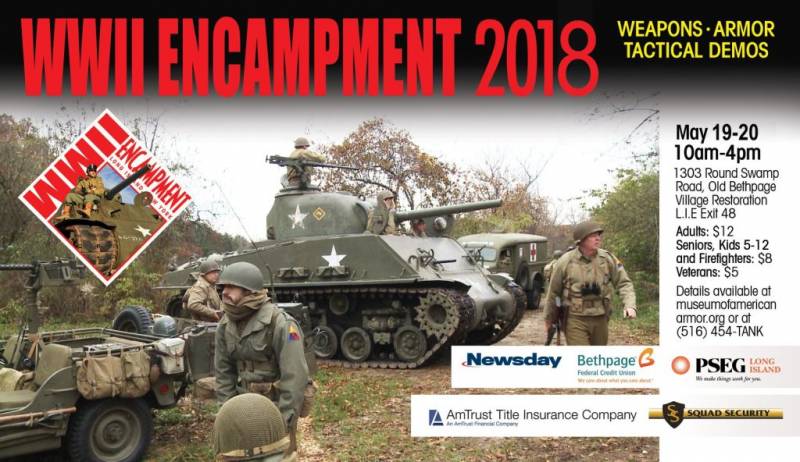
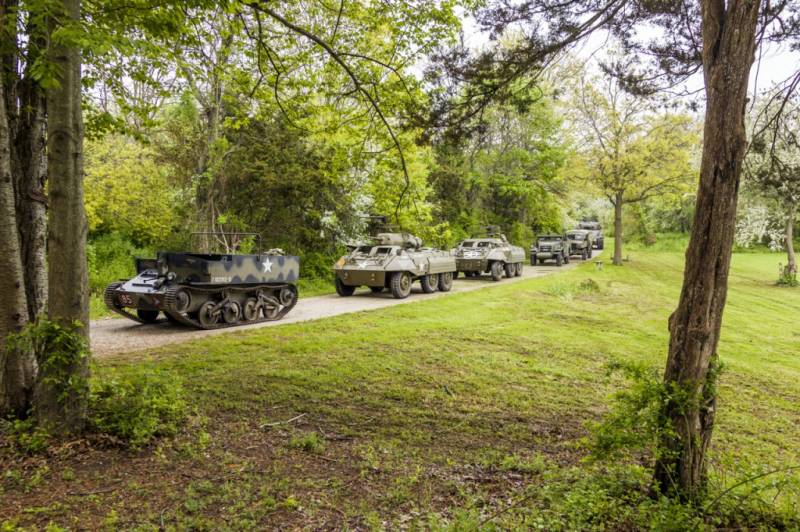
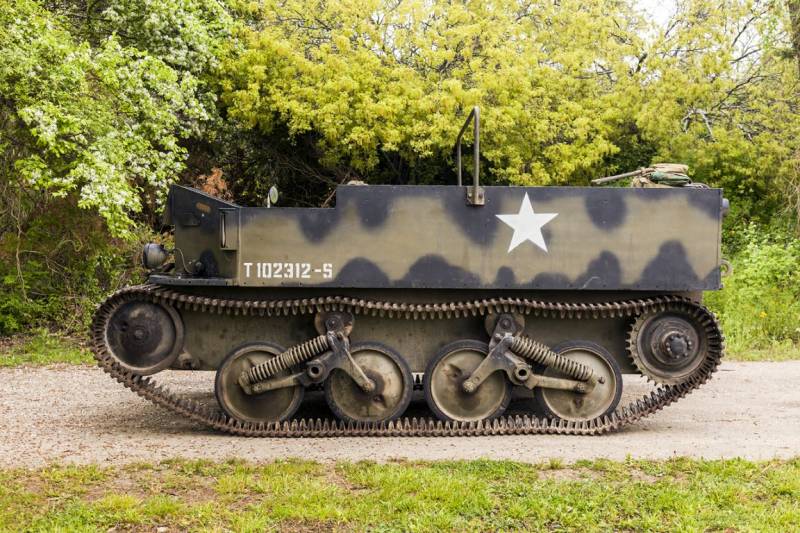

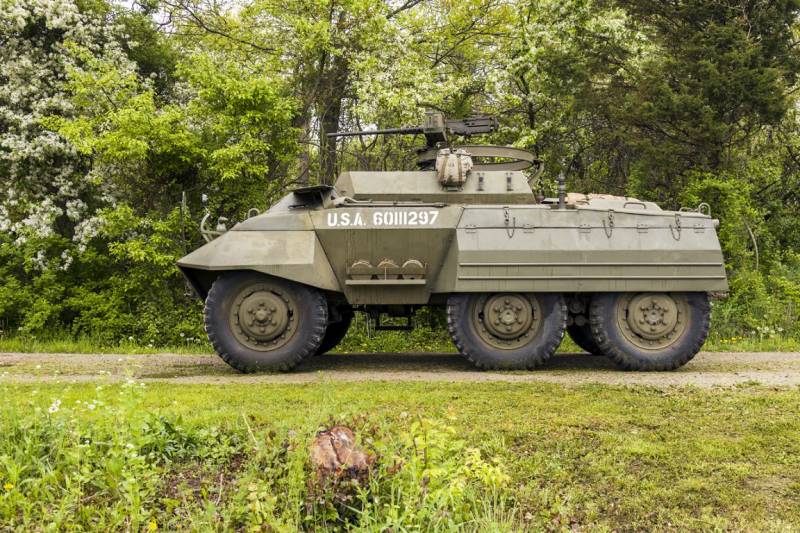
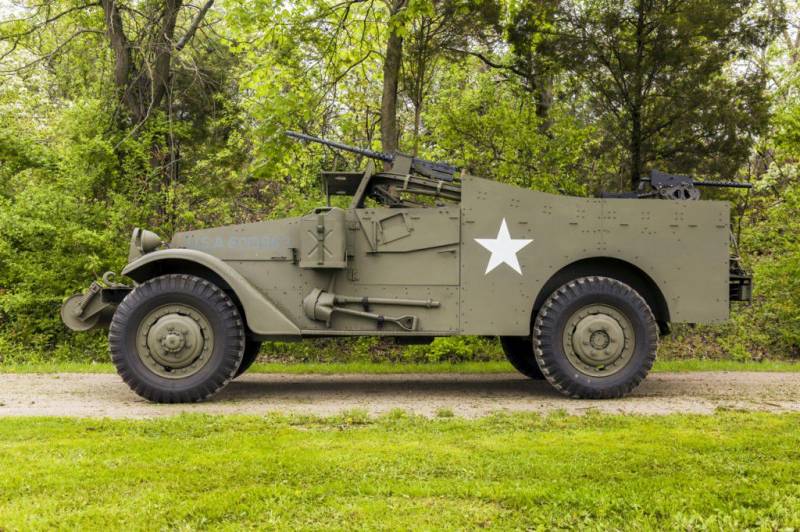
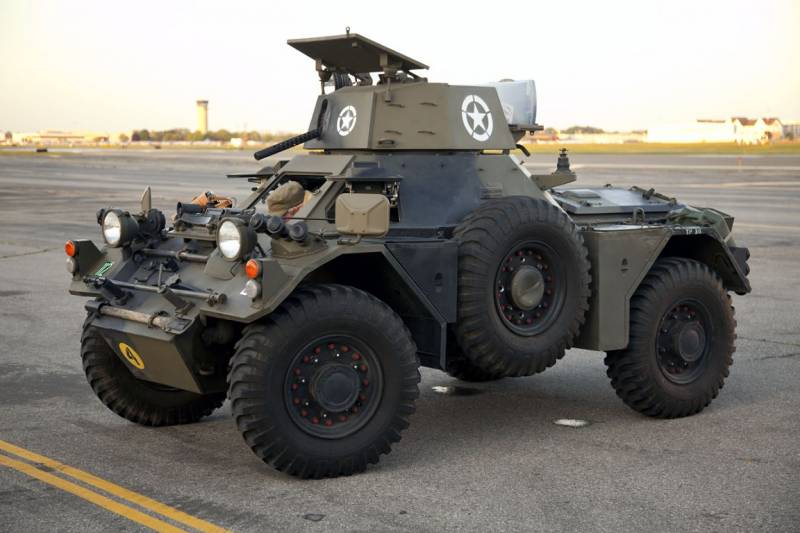
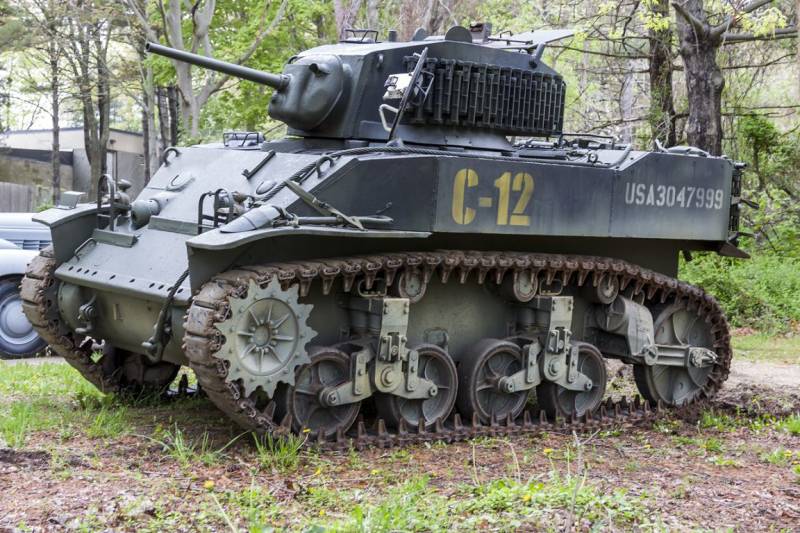
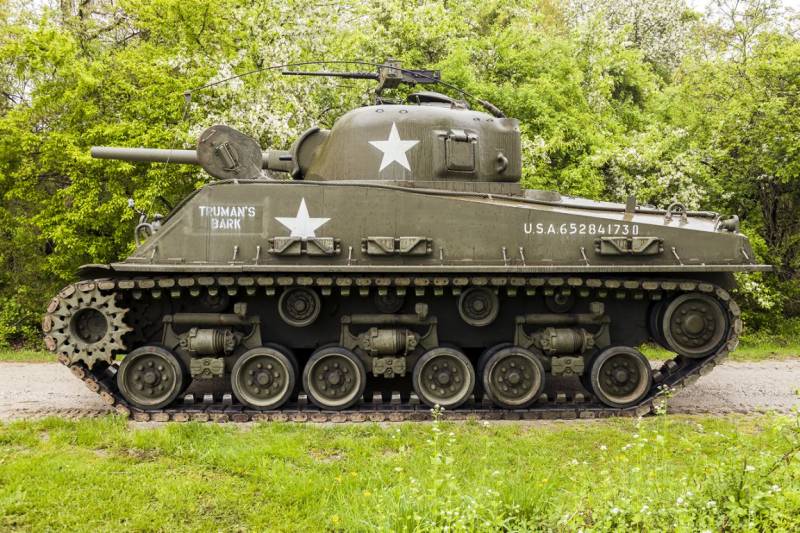
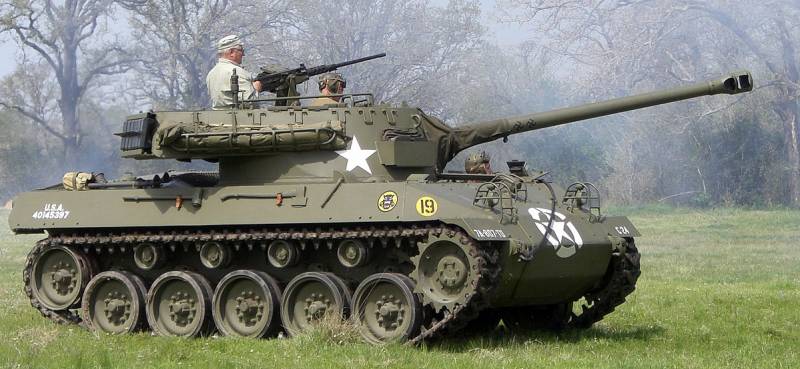
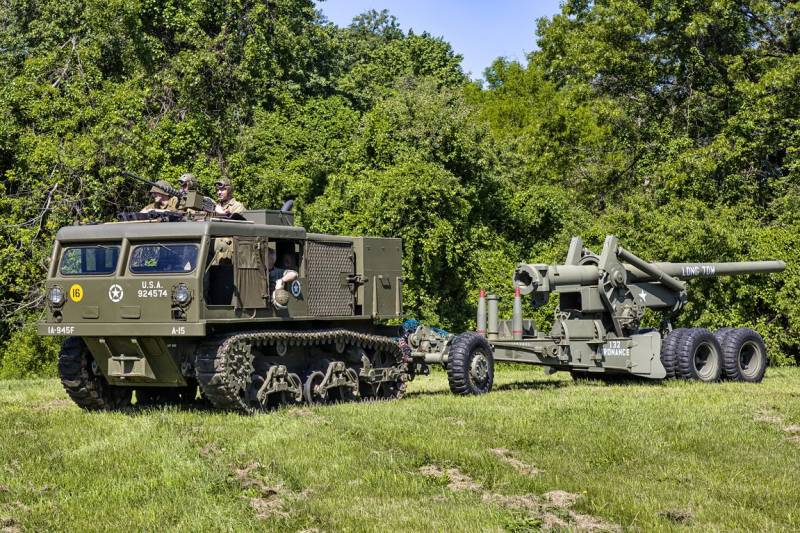
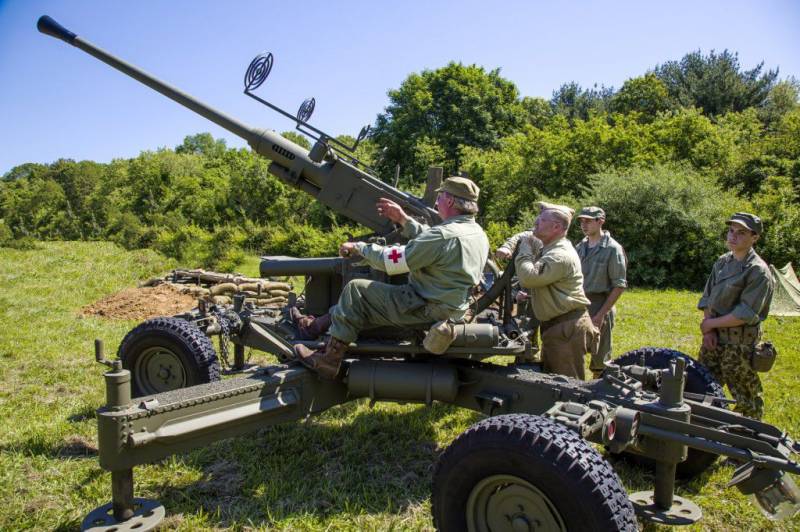
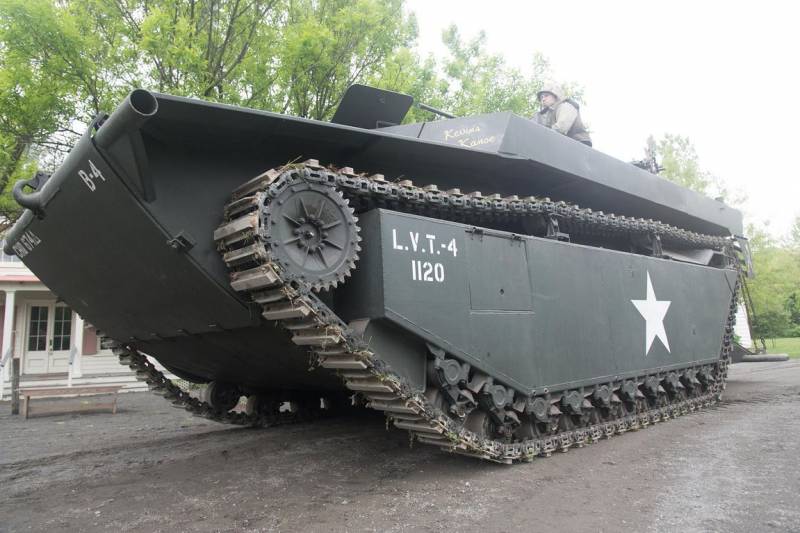
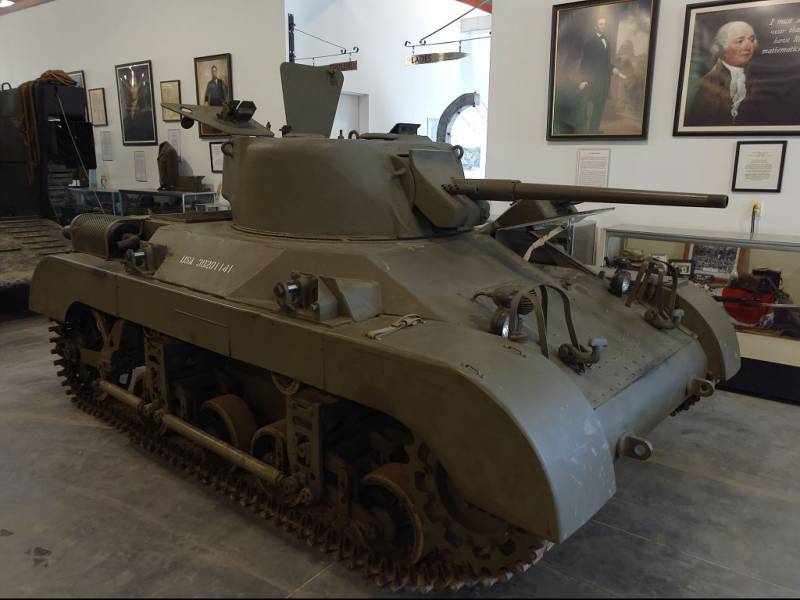
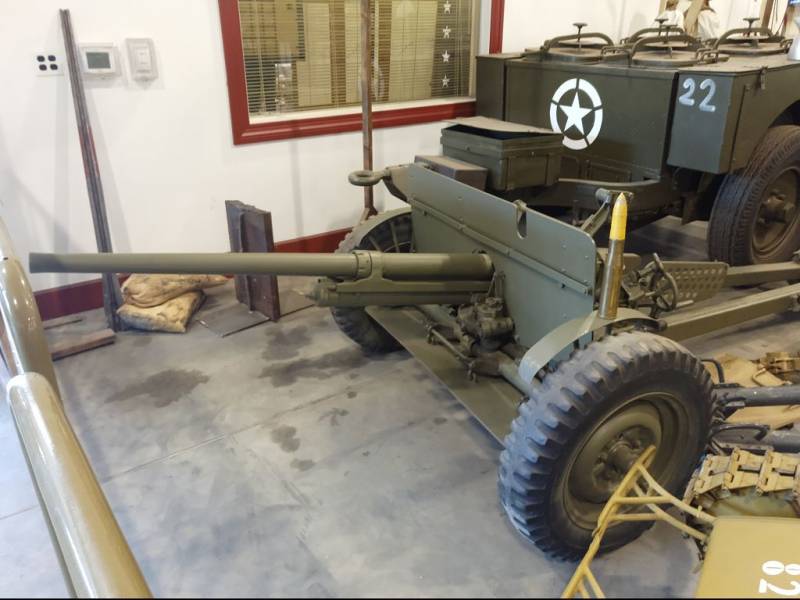
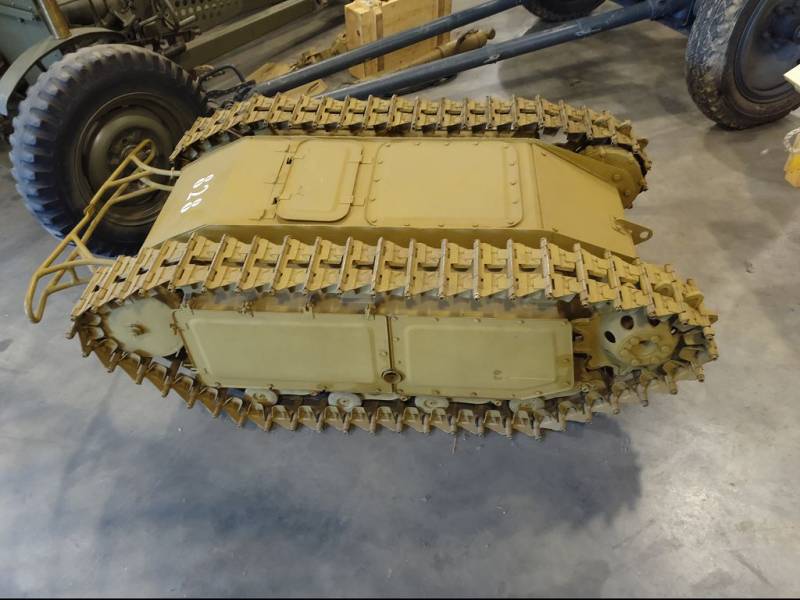
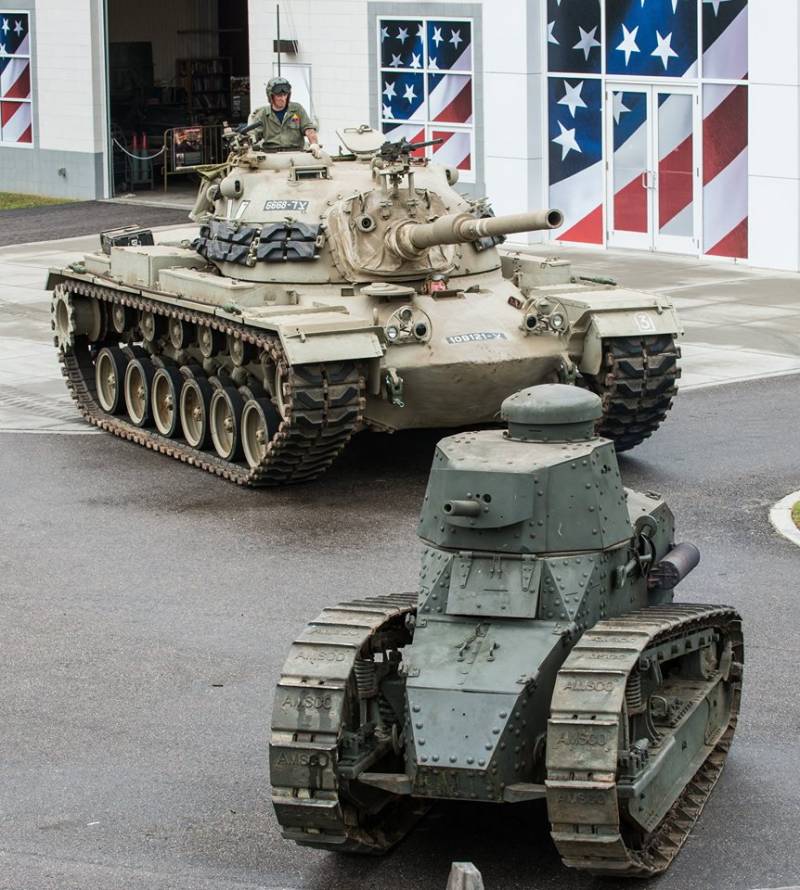
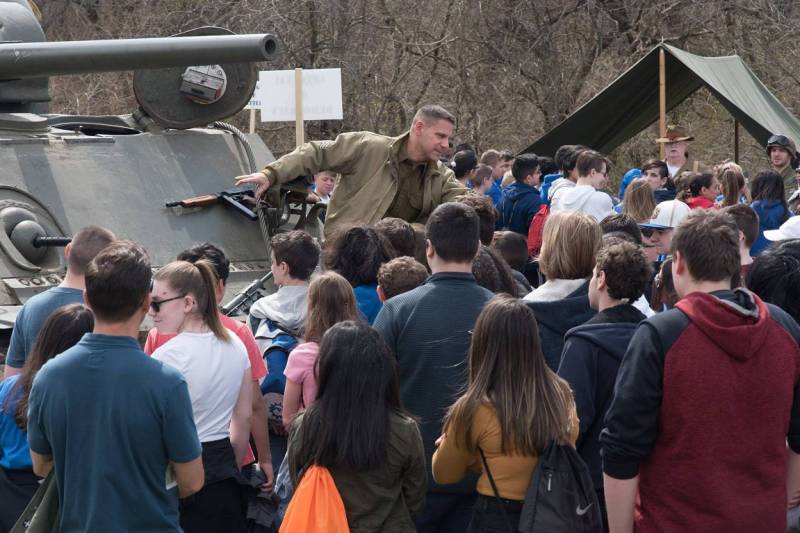
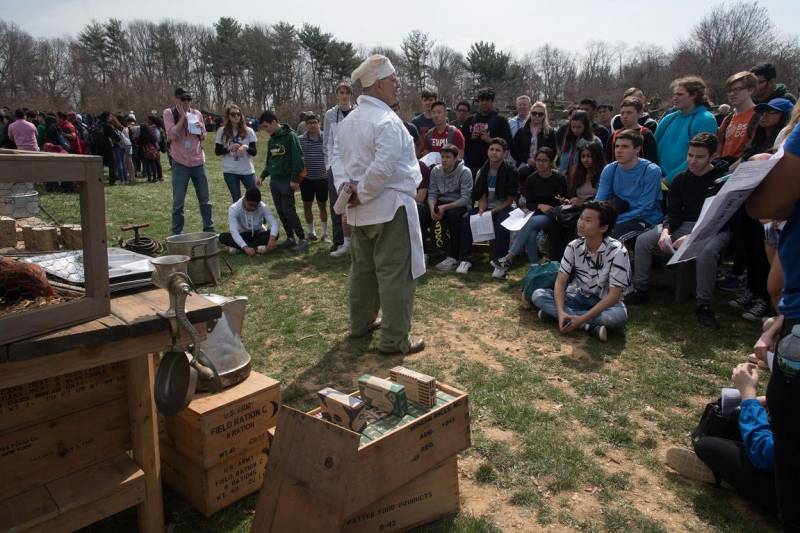
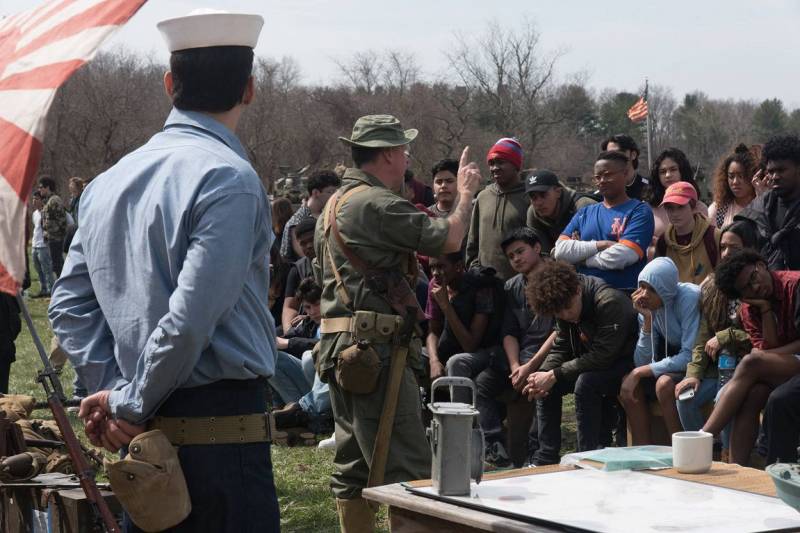
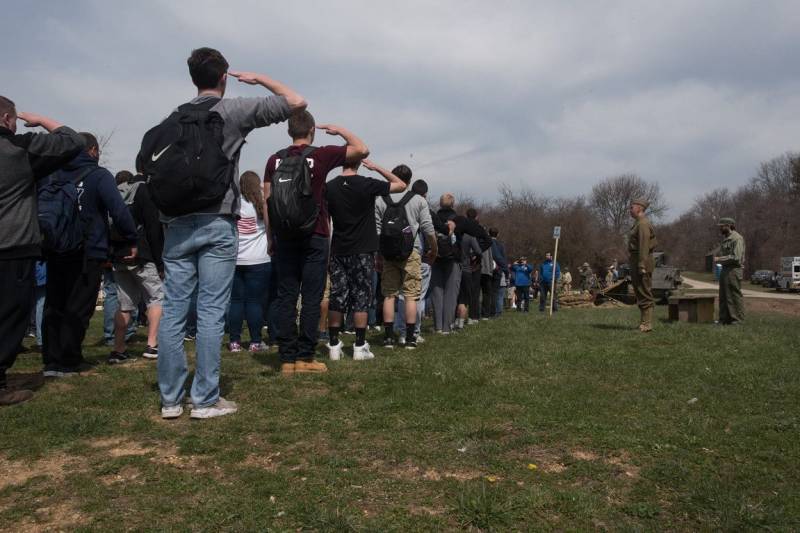
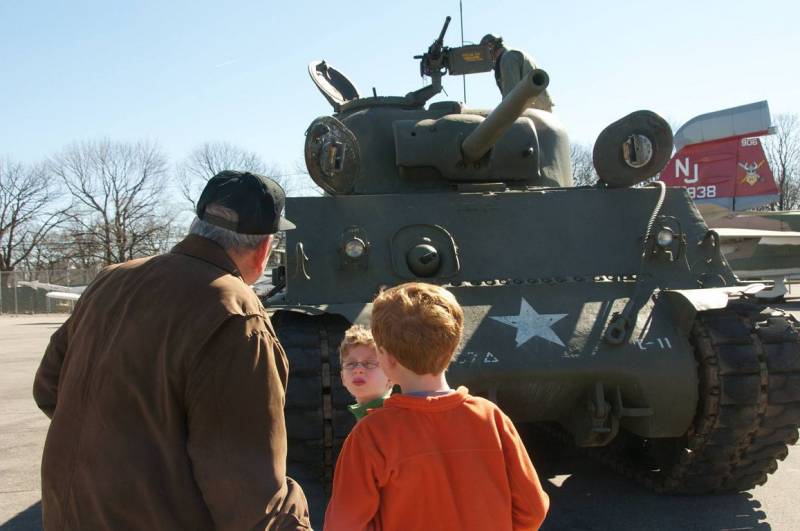
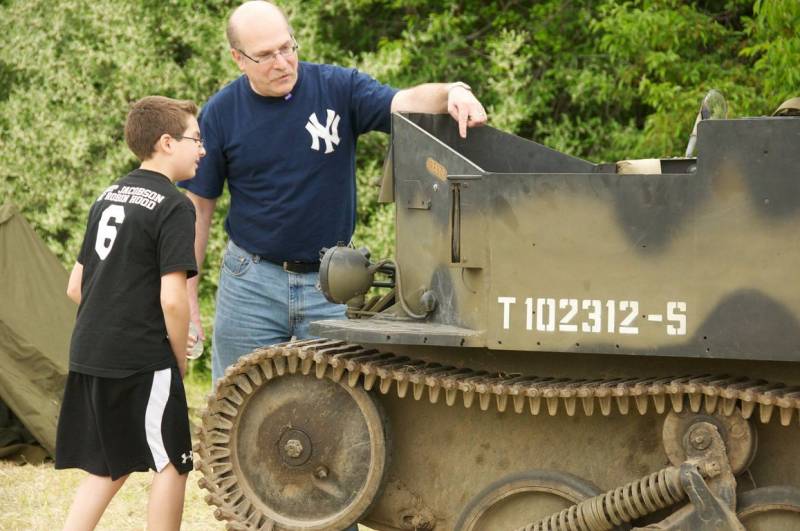
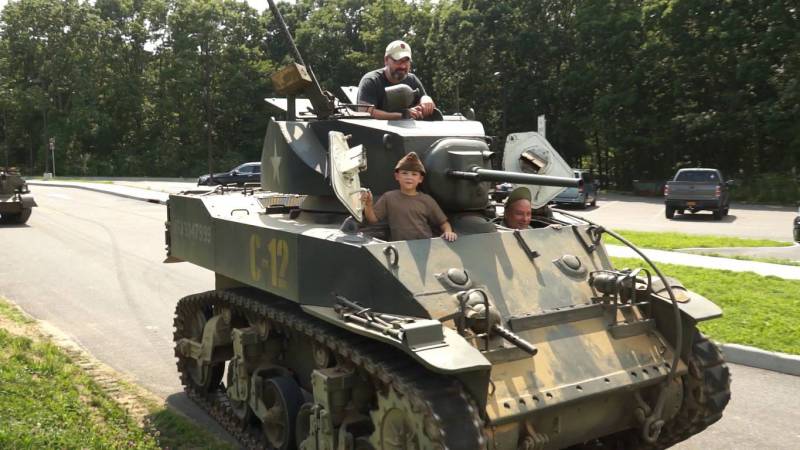
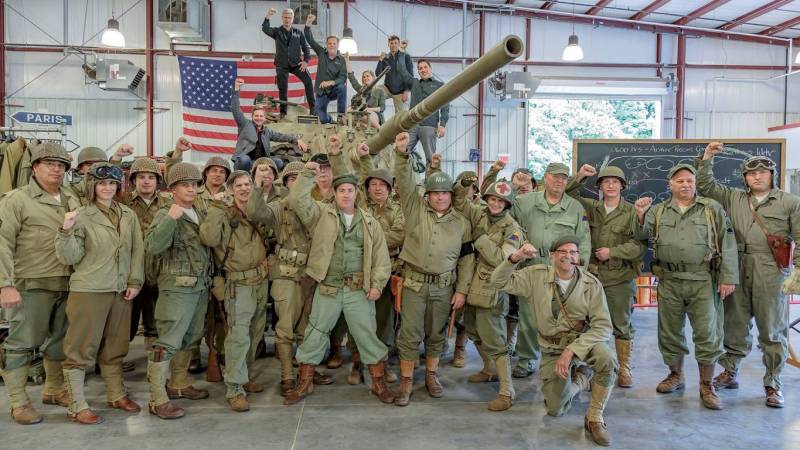
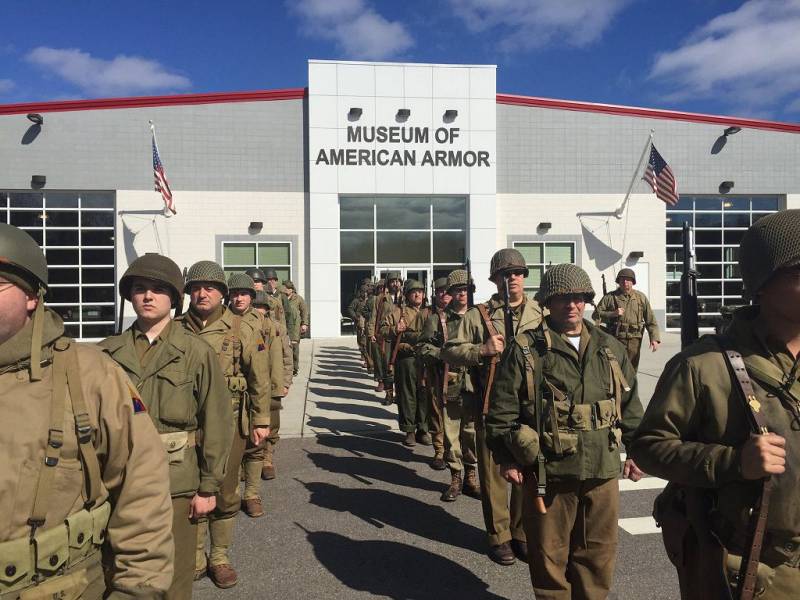
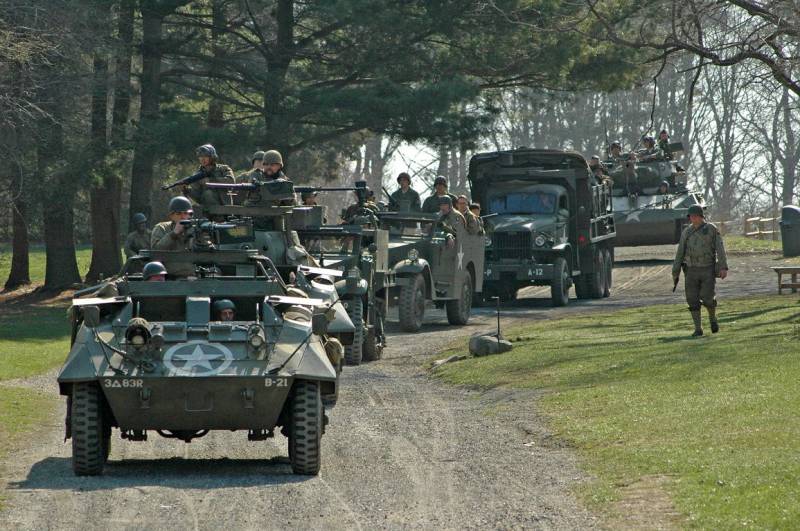
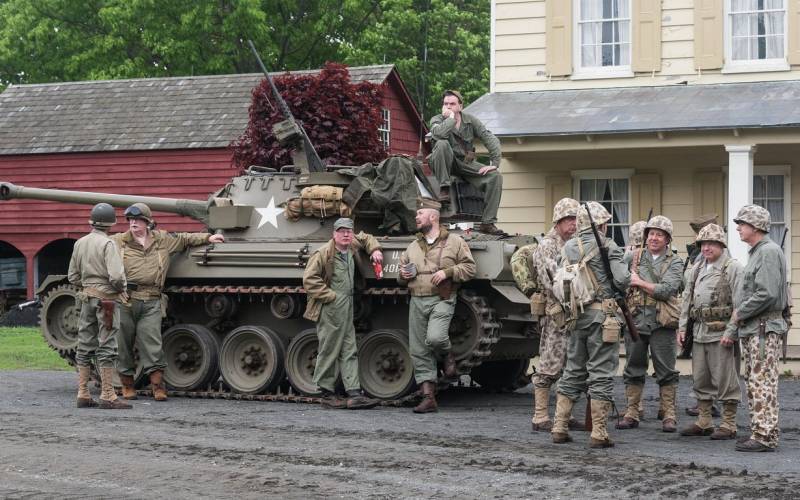
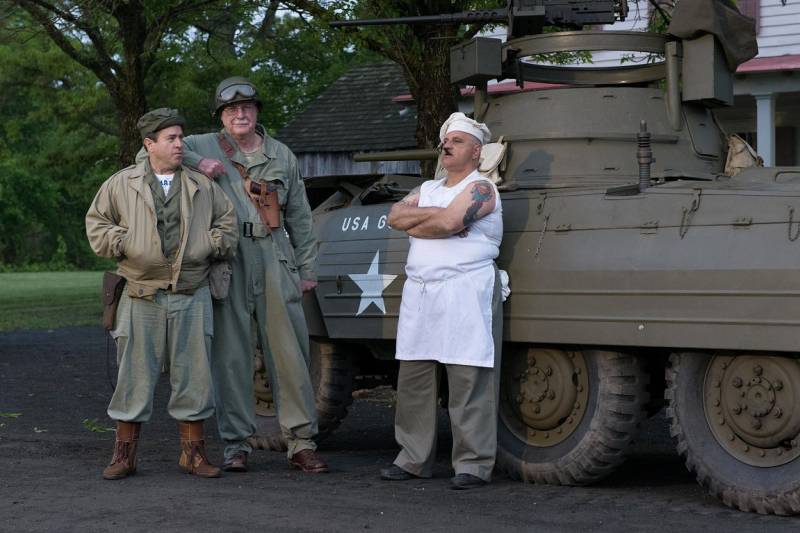
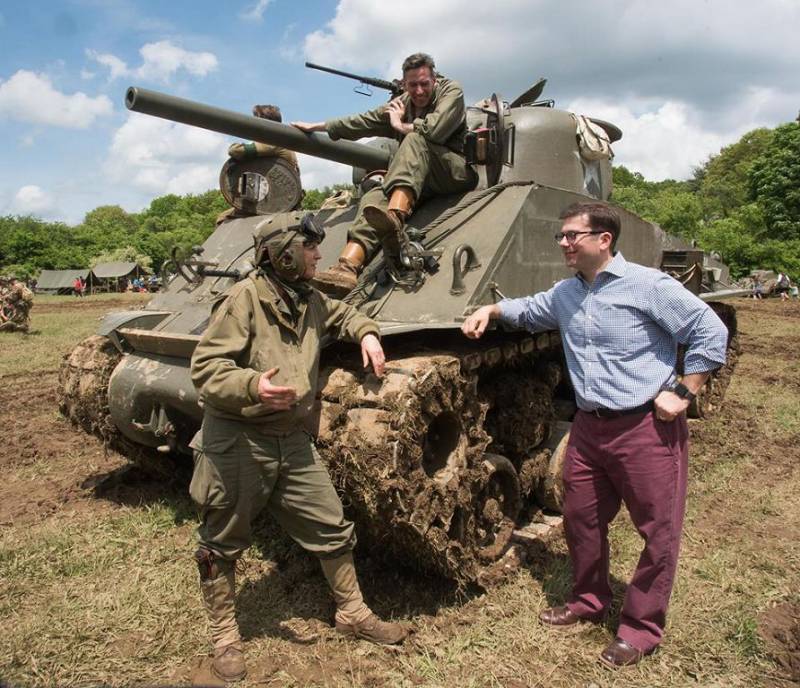
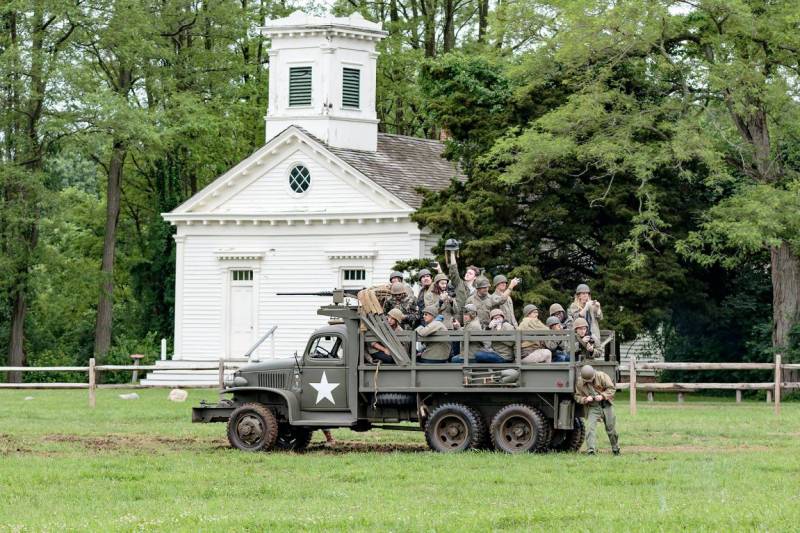
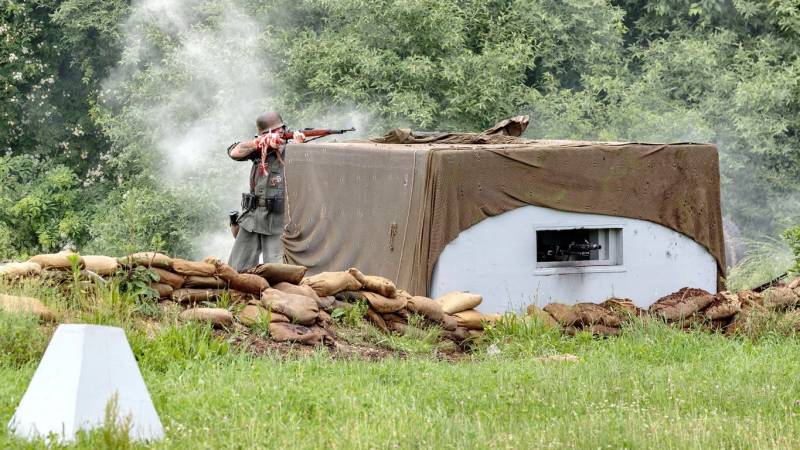
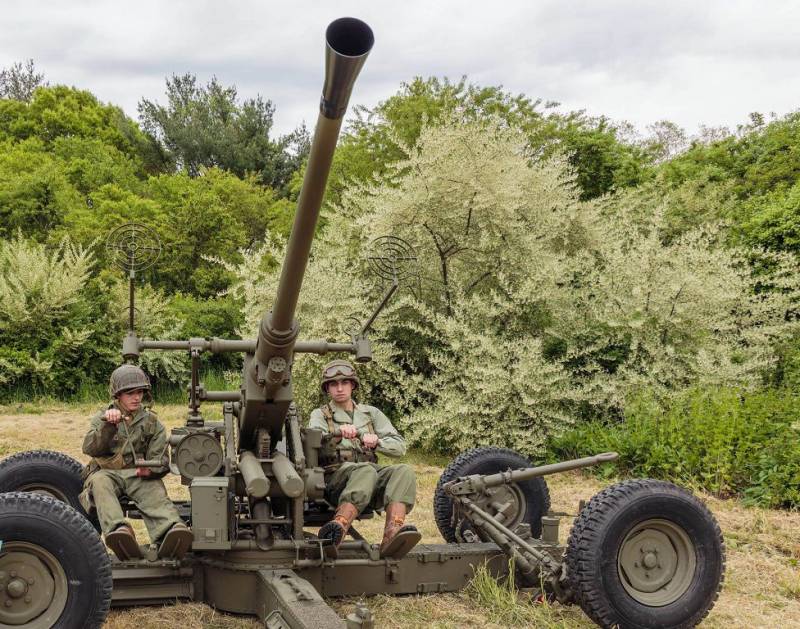
Information